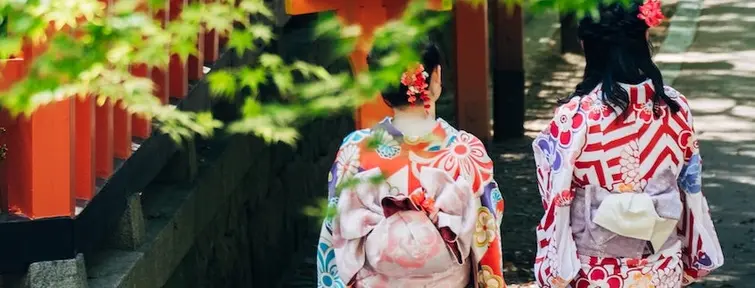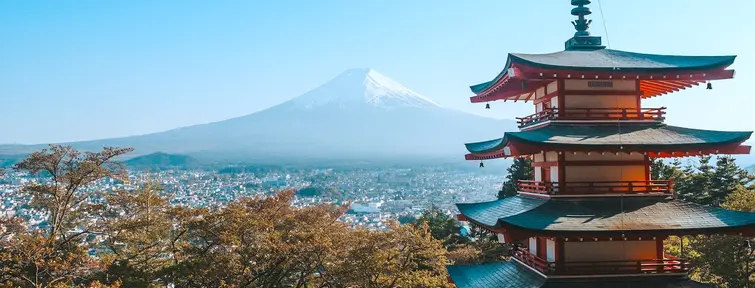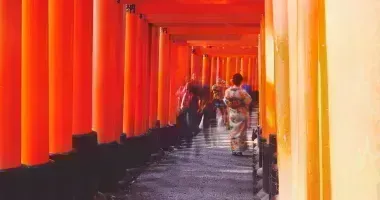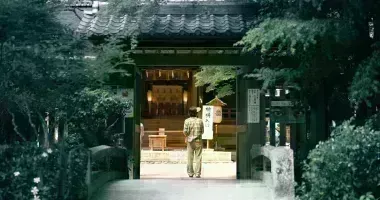How long does a trip to Japan take?
The ideal length of a trip to Japan depends on a number of factors, including your interests, your budget and the regions you wish to explore. In general, a stay of at least two weeks is recommended to discover the country's main attractions. However, it is possible to enjoy an enriching experience even during a shorter stay, or to explore in greater depth over several weeks. Let's take a closer look at the factors to consider when determining the optimum length of your trip to Japan.
Factors influencing the length of a trip to Japan
Several factors come into play when determining the ideal length of your stay in Japan:
Your interests: Japan offers a wide variety of experiences, from ultramodern metropolises to ancestral temples and breathtaking natural landscapes. The more varied your interests, the more time you'll need to explore them all.
Your budget: The cost of living in Japan can be high, especially in the big cities. A longer stay will require a larger budget for accommodation, meals and transport.
Regions to visit: Japan is made up of several distinct islands and regions. If you want to explore different parts of the country, you'll need more time for travel.
Season: Certain periods, such as the cherry blossom season in spring, are very popular and may require more time to fully enjoy the crowded tourist sites.
Japan in a week: the essentials
Although a week is a relatively short time to discover Japan, it is possible to get an overview of the main attractions:
Tokyo (3-4 days): Explore iconic districts such as Shibuya, Shinjuku and Asakusa. Visit the Tsukiji fish market, Ueno Park and the electronic district of Akihabara.
Kyoto (2-3 days): Discover famous temples and shrines such as Kinkaku-ji (Golden Pavilion) and Fushimi Inari Taisha. Stroll through the historic Gion district.
Day trip: Choose between Nara, with its ancient temples and free-roaming deer, or Osaka, for its culinary culture and unique urban ambience.
Two weeks in Japan: the ideal itinerary for a first visit
A two-week stay allows you to discover Japan's main attractions in greater depth:
Tokyo and environs (5-6 days): In addition to the sites mentioned above, add a day trip to Kamakura or Nikko to see historic temples.
Hakone (1-2 days): Enjoy the hot springs (onsen) and admire Mount Fuji.
Kyoto (4-5 days): Explore more temples and gardens, and take time to soak up the atmosphere of the former imperial capital.
Nara (1 day): Visit the Great Buddha and Deer Park.
Osaka (2 days): Taste the local cuisine and explore Osaka Castle and the lively Dotonbori district.
Three weeks in Japan: a complete immersion in Japanese culture
With three weeks, you can deepen your exploration and add less touristy destinations:
Tokyo and surrounding area (6-7 days): Include excursions to Yokohama and Mount Takao.
Mount Fuji region (2-3 days): Explore Hakone and the Five Fuji Lakes.
Kyoto and surrounding area (5-6 days): Add excursions to Uji and Arashiyama bamboo forest.
Nara and Osaka (3-4 days)
Hiroshima and Miyajima (2-3 days): Visit the Peace Memorial and the famous floating torii.
Japanese Alps (2-3 days): Discover Takayama and Shirakawa-go for their traditional architecture.
A month in Japan: exploring the archipelago in depth
A month allows you to explore Japan in depth, adding less-visited regions:
Tokyo and Kanto (8-10 days): Include excursions to the Izu Peninsula and Kusatsu Onsen.
Kyoto and Kansai (7-8 days): Explore Kobe and Mount Koya in addition to the sites already mentioned.
Hiroshima and Western Japan (4-5 days): Add a visit to Okayama and its Korakuen Garden.
Shikoku (3-4 days): Discover the least touristy island with its temples and unspoilt nature.
Kyushu (5-6 days): Explore Fukuoka, Nagasaki and the hot springs of Beppu.
Okinawa (3-4 days): Finish with the tropical beaches and unique culture of the southern islands.
Time-saving tips for your trip to Japan
To make the most of your stay, however long it lasts:
Plan ahead: Book your accommodation and train tickets, especially during busy periods.
Use the Japan Rail Pass: It allows unlimited travel by train and can be very economical for longer stays.
Alternate between cities and the countryside: This will allow you to discover different facets of Japan and avoid the fatigue of big cities.
Stay flexible: Leave some time in your schedule for unexpected discoveries.
When to go to Japan? The best periods according to the length of your stay
The period of your trip can influence the ideal length of your stay:
Spring (March-May): Ideal for cherry blossom viewing, but also the peak tourist season. Allow more time for sightseeing.
Summer (June-August): Hot and humid, with many festivals. A longer stay allows you to switch between cities and mountains to escape the heat.
Autumn (September-November): Magnificent autumn colors. Pleasant temperatures make for longer, more comfortable stays.
Winter (December-February): Ideal for winter sports and hot springs. A longer stay allows you to enjoy both winter activities and urban attractions.





